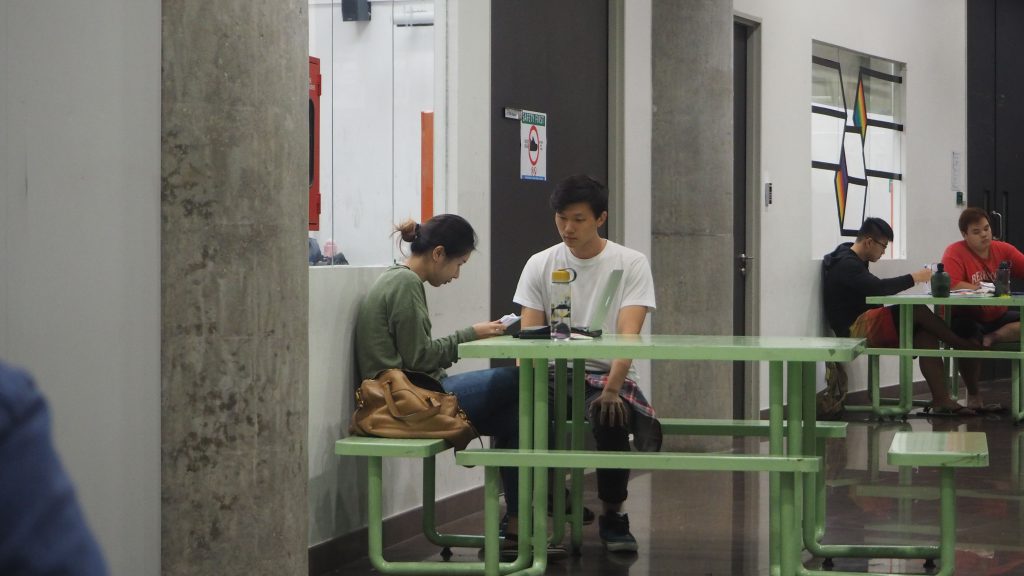Artist’s Statement
There is something very affecting about old photographs. You’re transported back into a slice of time, one that is a part of a hazy reservoir of long-forgotten memories. The inevitable side-effect of time travel is that you can’t help but make comparisons between Life back then and Life at the present time, and perhaps Life worked out for you and these memories evoke a sense of pleasant nostalgia. Or perhaps not.
In Conversations with Myself, Nguyen explores photographic evidence of her childhood, drawing parallels between Lifebefore and Lifenow. In the series, Nguyen imagines speaking to her younger self through the photographs as an act of affirmation, of validation, of questioning and (not) finding answers. The viewer, then, is invited into the intimate world of the artist, to feel, to empathise, to hear her voice in your head. And perhaps after some time, the voice of the artist blends and morphs into a more familiar one, your voice.
I began approaching this project in the specific sequence of coming up with text (channeling thoughts and feelings) before searching for an appropriate photograph that could accurately complement the text.

However, it became too restrictive after a certain point and so the process evolved to become a more organic one – first looking at photographs, then capturing my stream of consciousness in textual form, trying to vividly recollect details of the moment, and picking (sometimes altering) the most affecting phrase.
It felt good, in a way, to really allow myself to feel what I needed to feel and in a way, it was liberating to put it down on paper. It is only with great hopes that the emotional baggage translates itself through the text and the images.
I will talk about a few –

The choice to create film stills out of photographs was really one that is instinctive, so I wouldn’t say that too much thought has gone into it. But I suppose it works because the photographs are frozen slices of life, that when ‘subtitled’, becomes more than a still moment – it extends and taps into the dimension of time, without being altered from its frozen state.
The choice to include Chinese versions of the text, however, is a conscious one. Not only does it effectively mimic styles of film projection, it also adds a certain dimension to its English counterpart. The Chinese language, to me, is one that is very romantic, and there are certain things that you can only say in the language that will not carry the same meaning as it does in English.
In the above photograph (if one were able to read both texts), the viewer gains additional context of the statement (它们就在你身旁 – they’re right next to you).
This one says “Don’t expect any more from him.” and “He’s not going to support you anymore.”
I really enjoyed this visually – how blurry the photograph is, how little it shows, yet the curve in the eyes and the stoutness of the nose says so much and shows so much that the subject is smiling.
There is a short string of photos that through the series that run on a more positive note – a more encouraging, supportive one, as if a subtle, constant reminder that everything is going to be okay and that things will turn out all right in the end.
This one is my favourite. Something about the absolute innocence, and the telling carefree-ness of the child, that makes the text all more powerful.



I really wanted to strip away my identity in this particular photo, to really emphasize the idea of ‘not birth’ and of death. Eventually, I found that the flowers (chrysanthemums) was the most elegant way to go about it, and the most symbolic too, with chrysanthemums being representative of death in the Chinese culture.

I also wanted to strip away the identity of my father in this photo. Symbolically, to portray my lack of emotional attachment to the man. Purposefully, in the hopes that the viewer may be able to empathise with text and visual, and draw their own connections without being hindered by an unfamiliar face.
Here are the rest-
I have decided on this final arrangement. The series has no linear narrative, so it is acceptable to let your eyes jump from one image to another. The last piece however, is intentionally left face down on the ground – to evoke a sense of mystery, of questioning, of this-is-so-upsetting-already-how-worse-can-it-get?

The images are placed at a child’s height too, as if presented to my younger self.

The viewer discovers the fallen piece, an out of curiosity, picks it up.
Overall, the series is meant to evoke sympathy, with the hopes of evoking empathy as viewers try to put themselves in my shoes.
Post-evaluation: I had a thought, though, that the images are only affecting simply because those viewing it knew me personally. And thus it was easier for them to form an emotional attachment to the piece. What about strangers, then, who do not know me?
I employed my friend (in white) to approach a stranger (I could not approach the stranger because then that would establish an emotional attachment already) to ask what she felt when looking through the pieces.
It was as I feared. The stranger was not able to connect with several of the images. But she did find a few rather powerful, so that’s okay. I can live with that.













